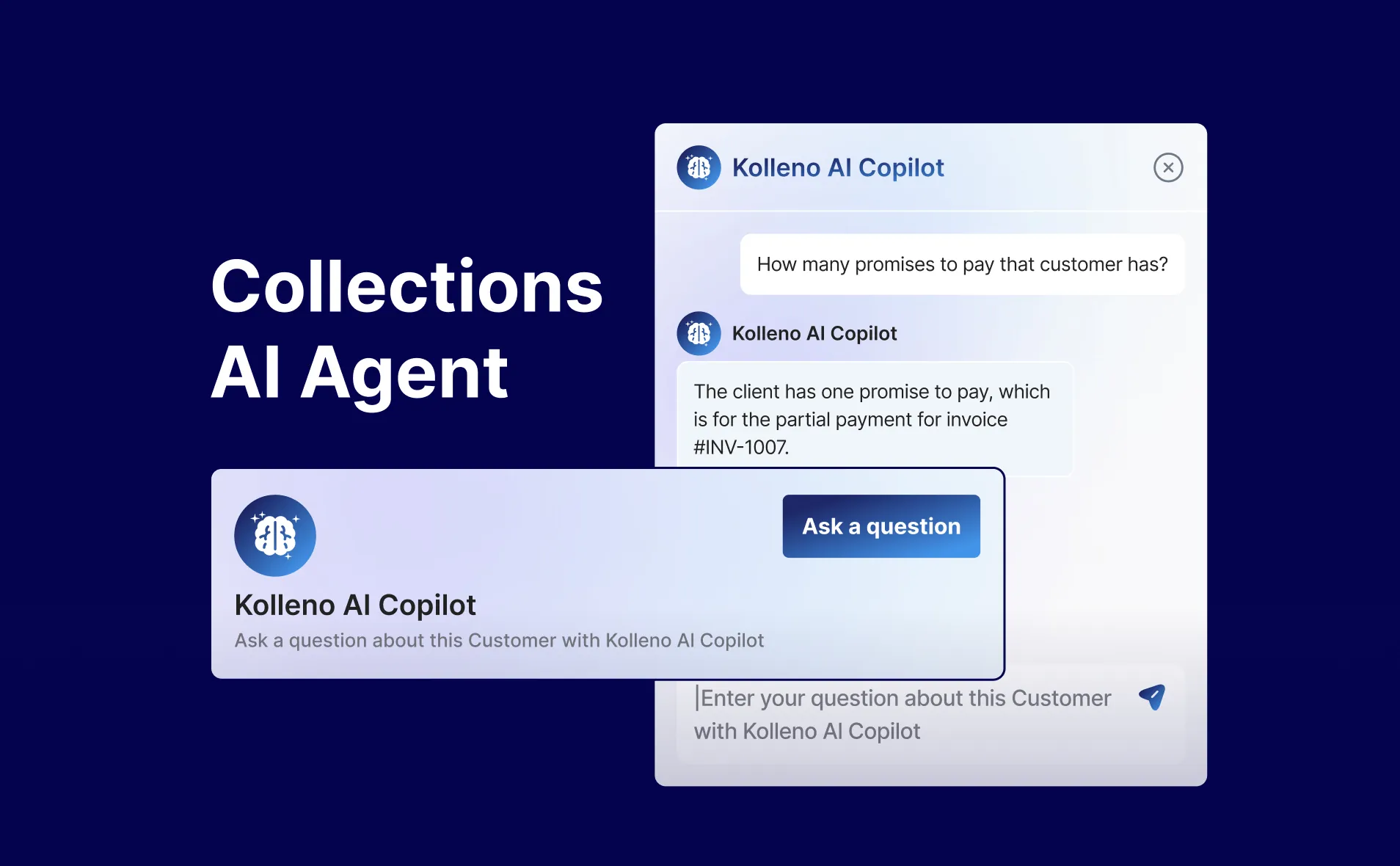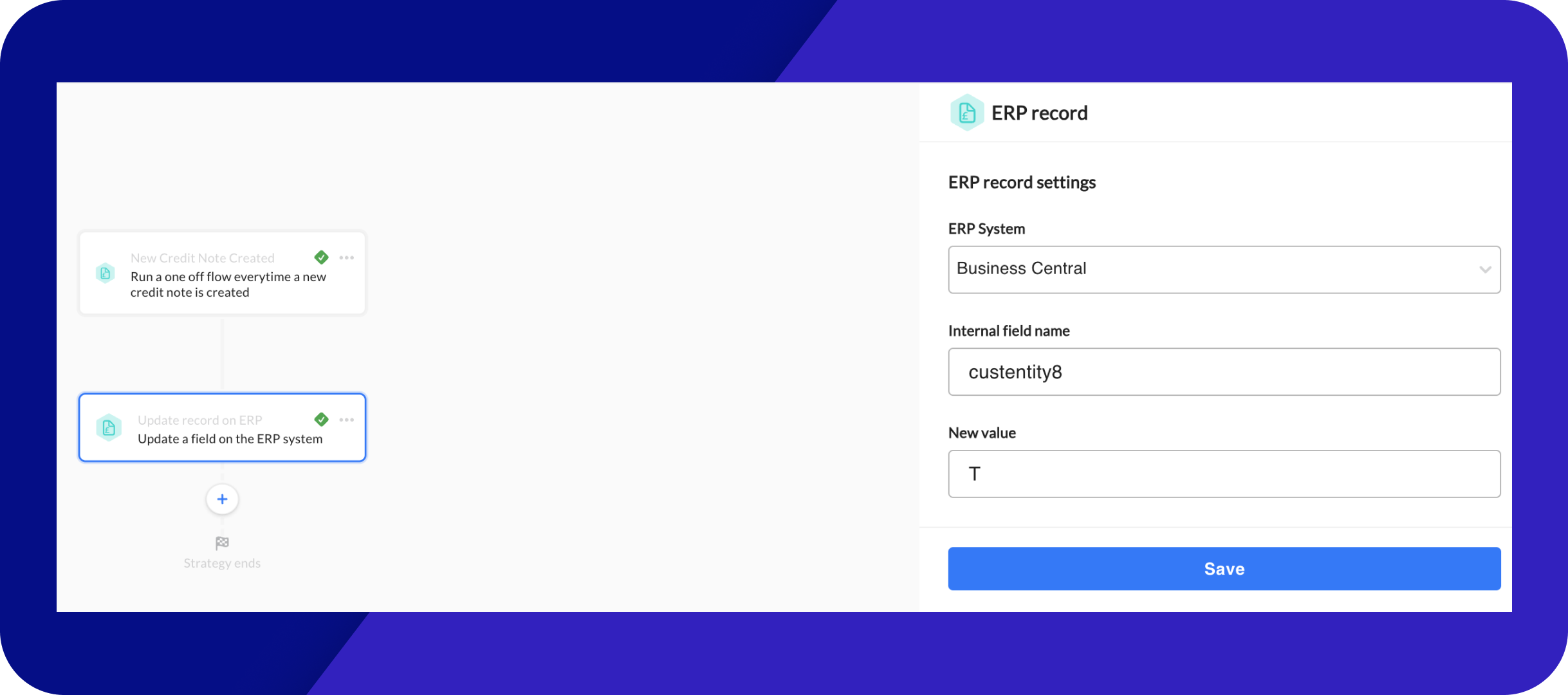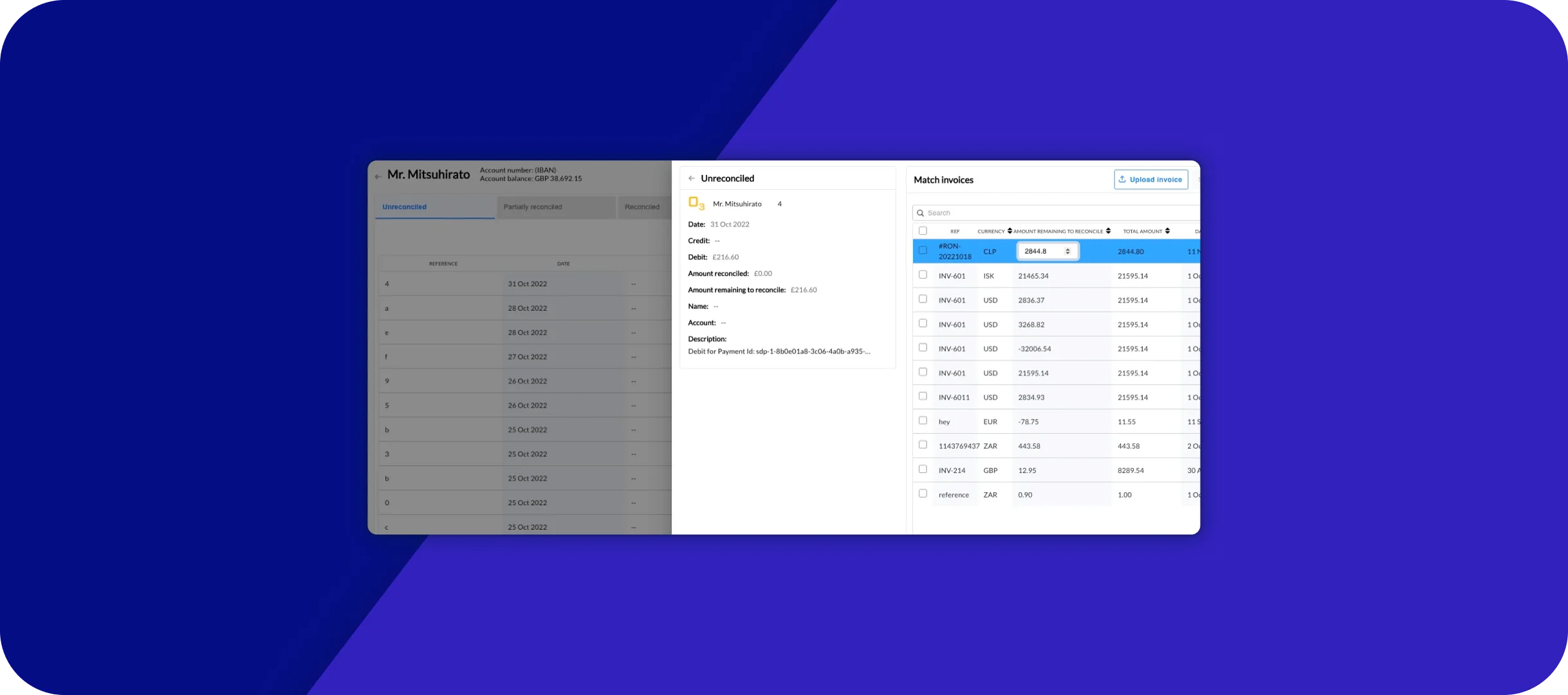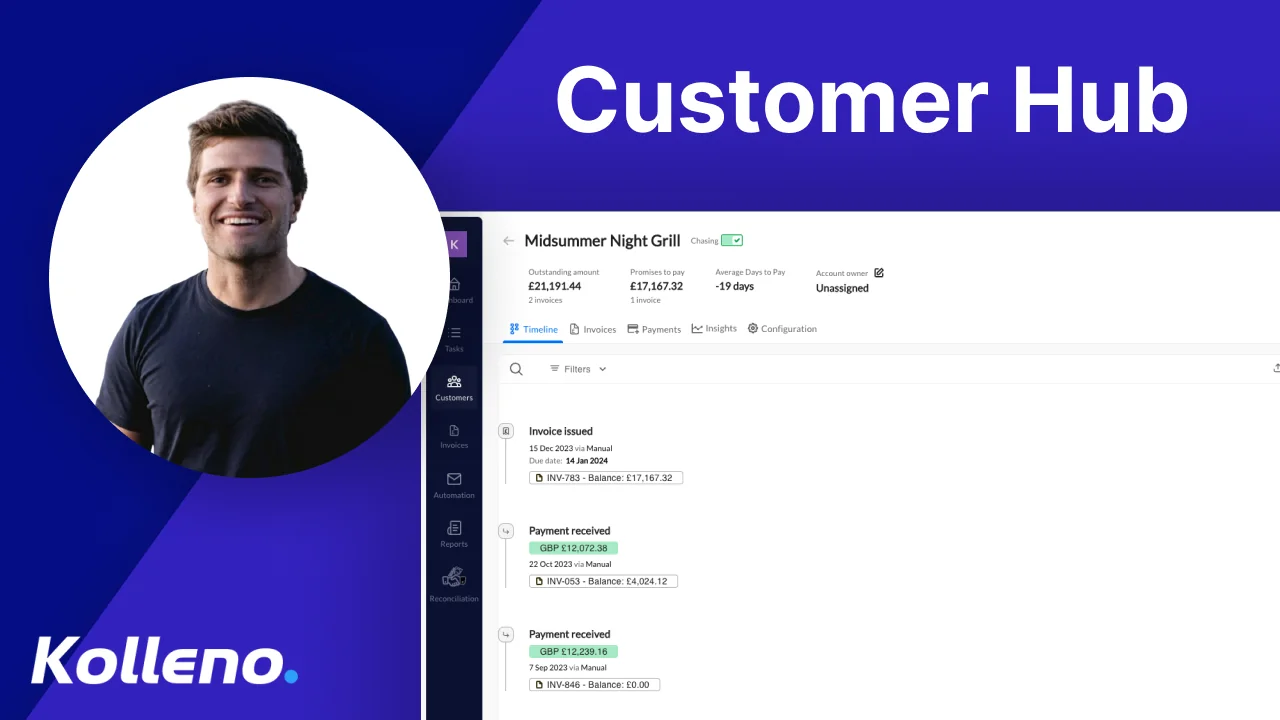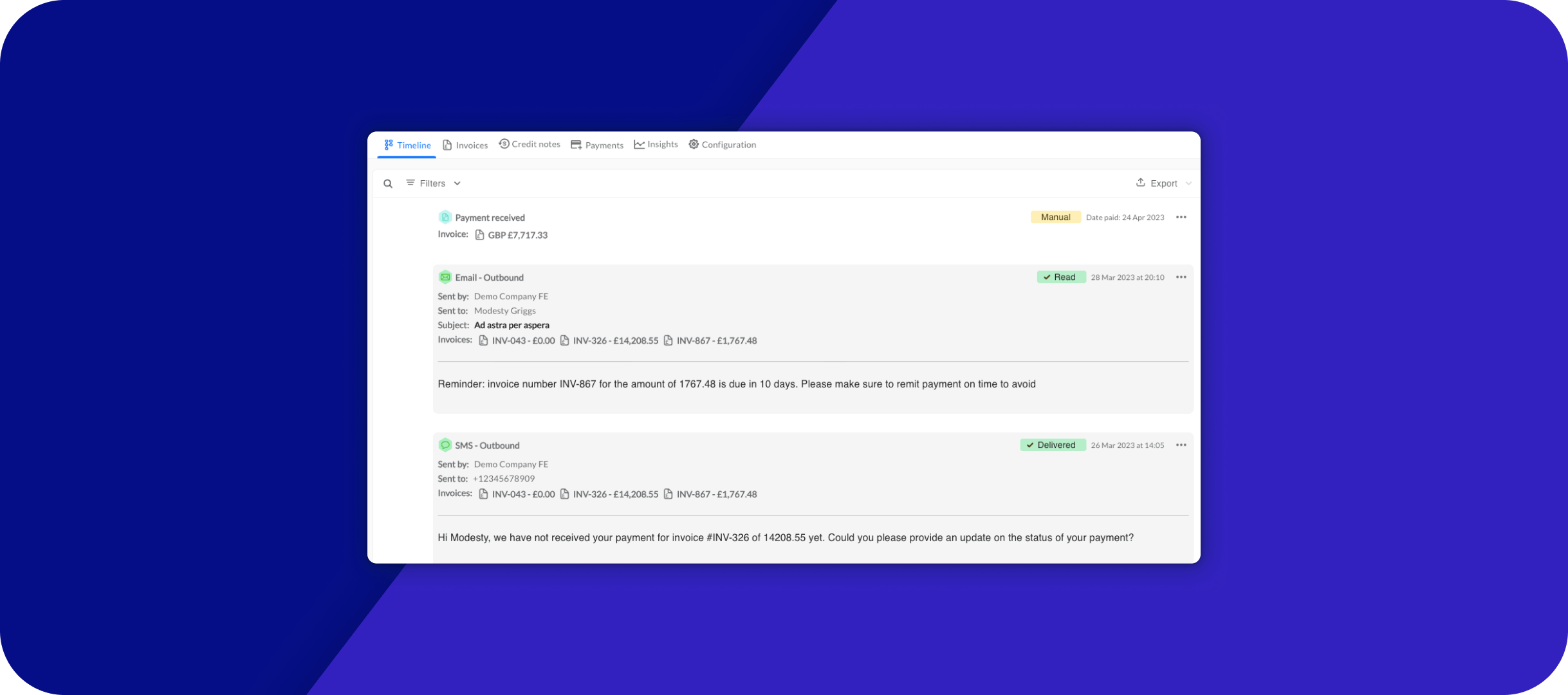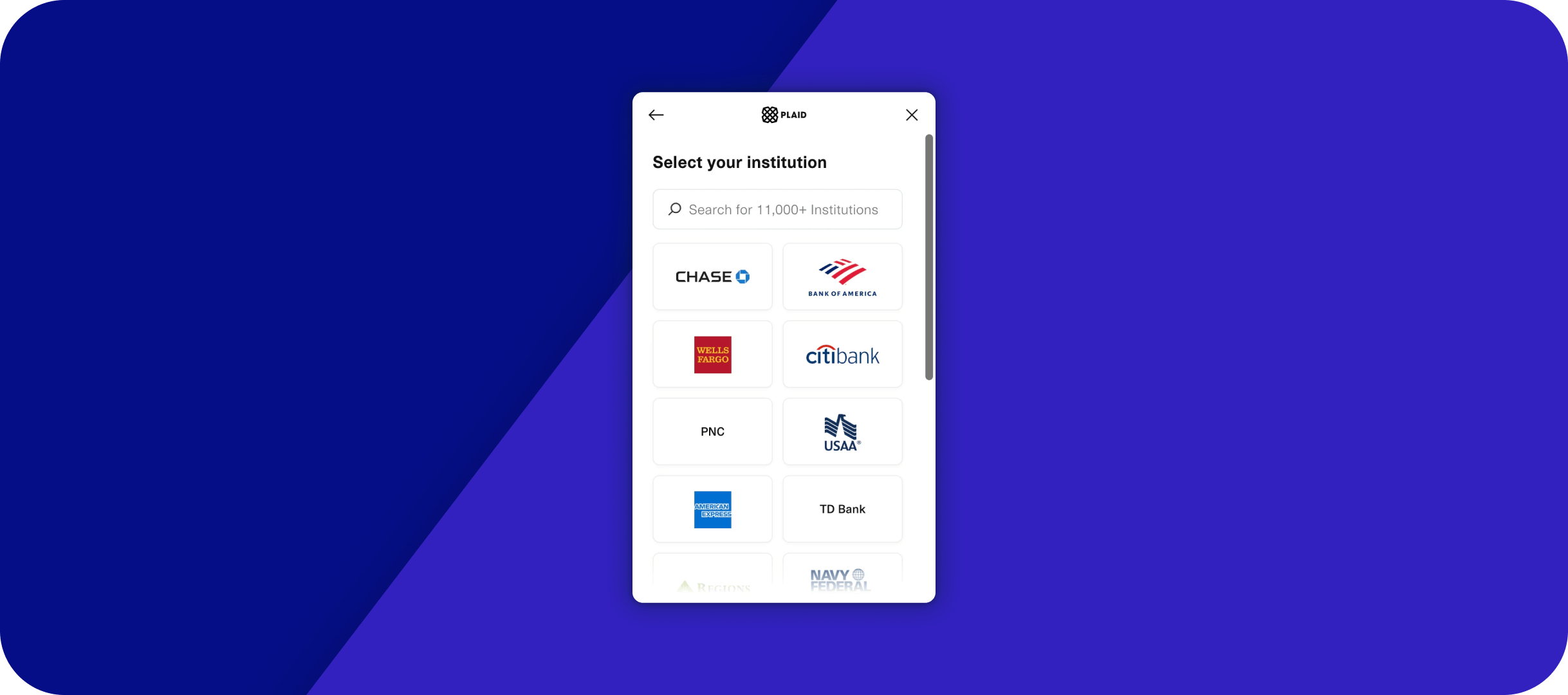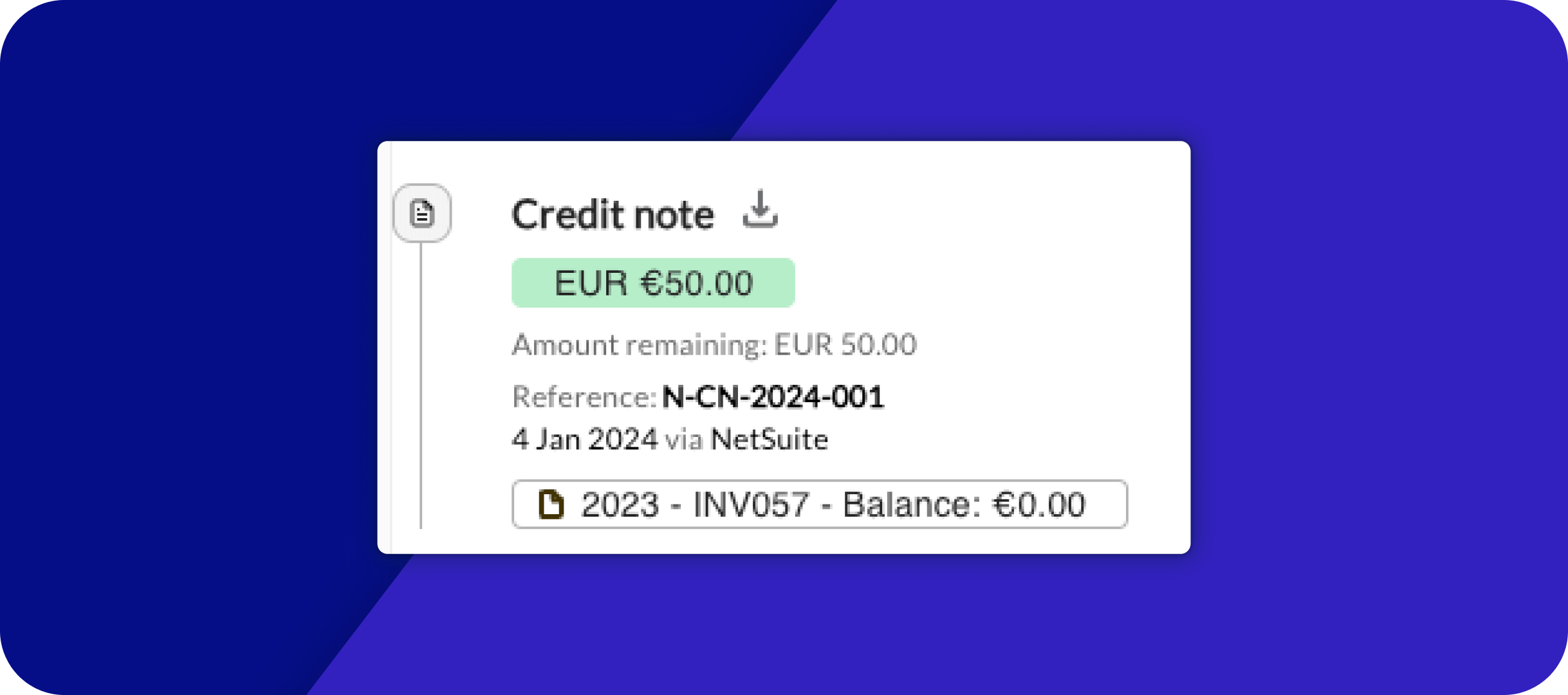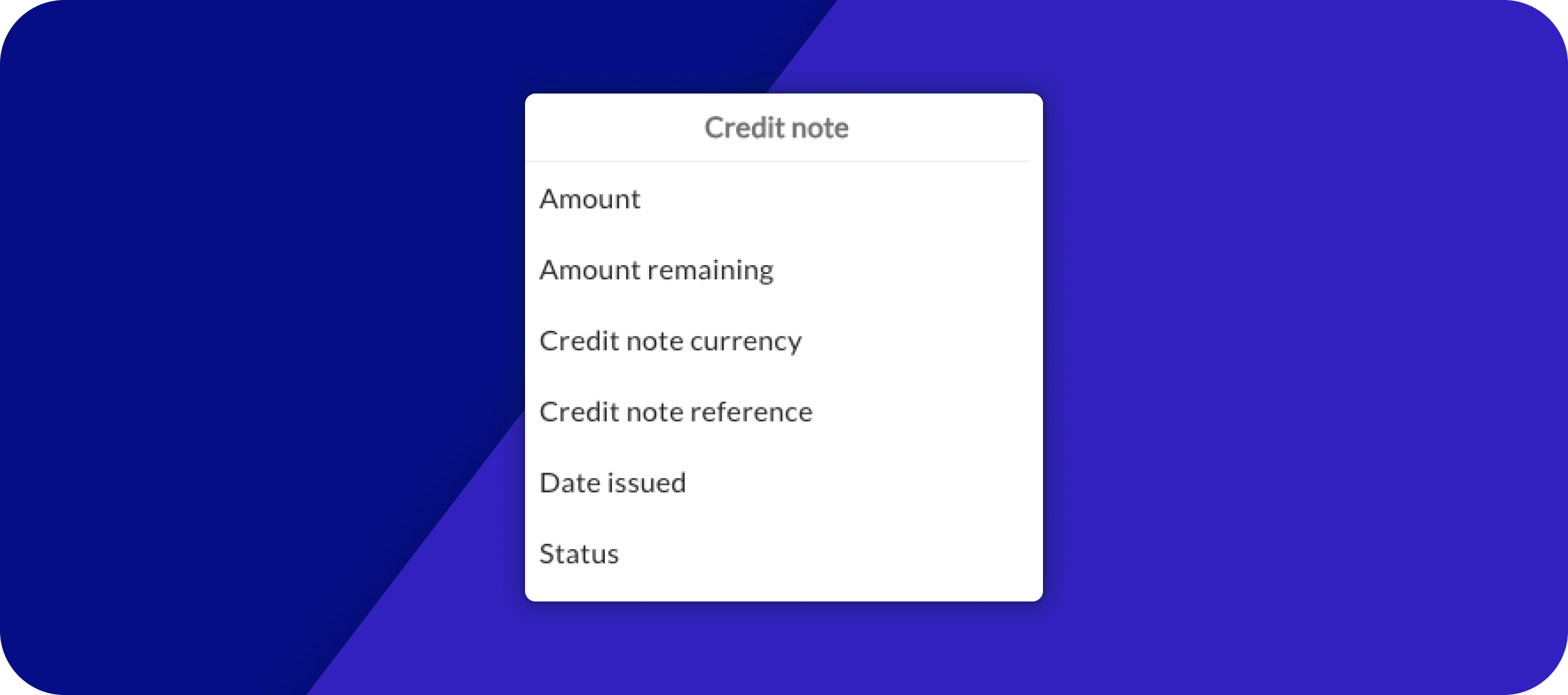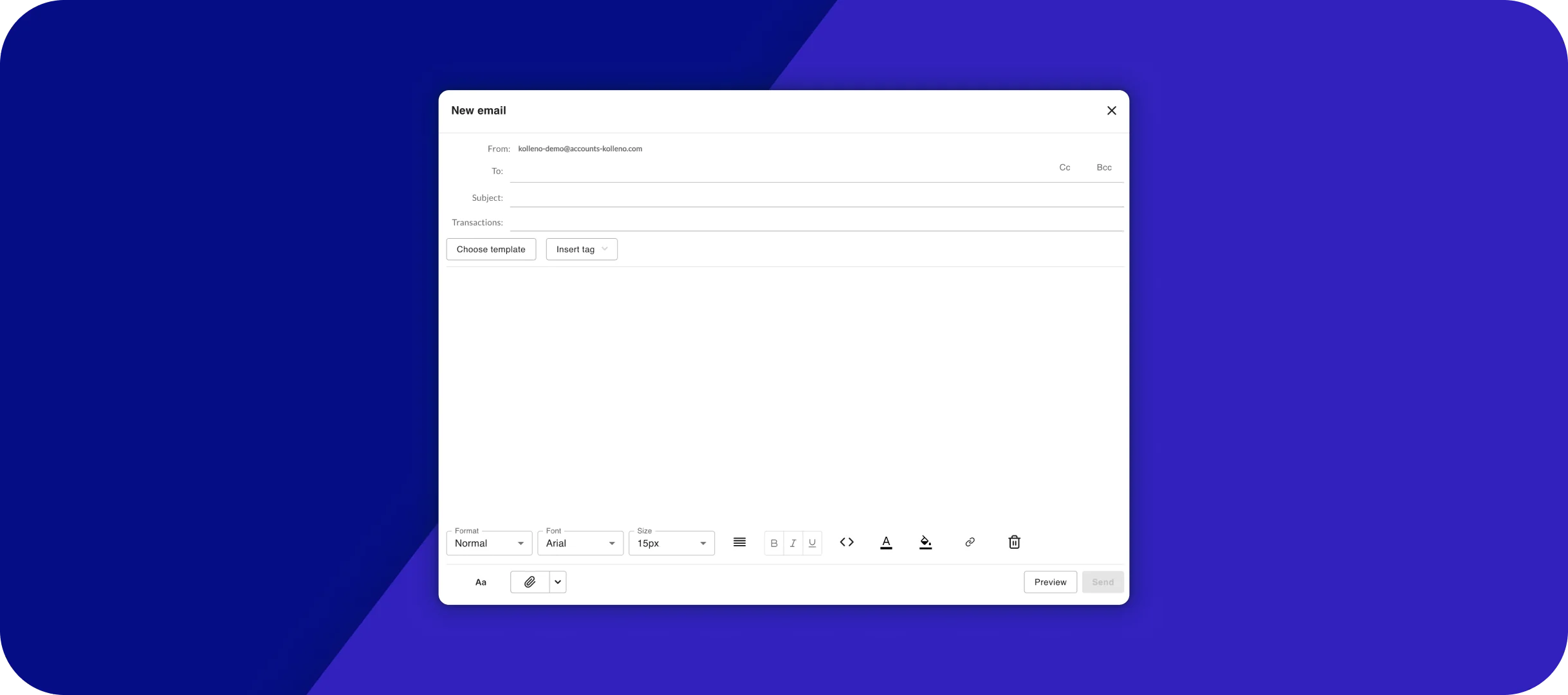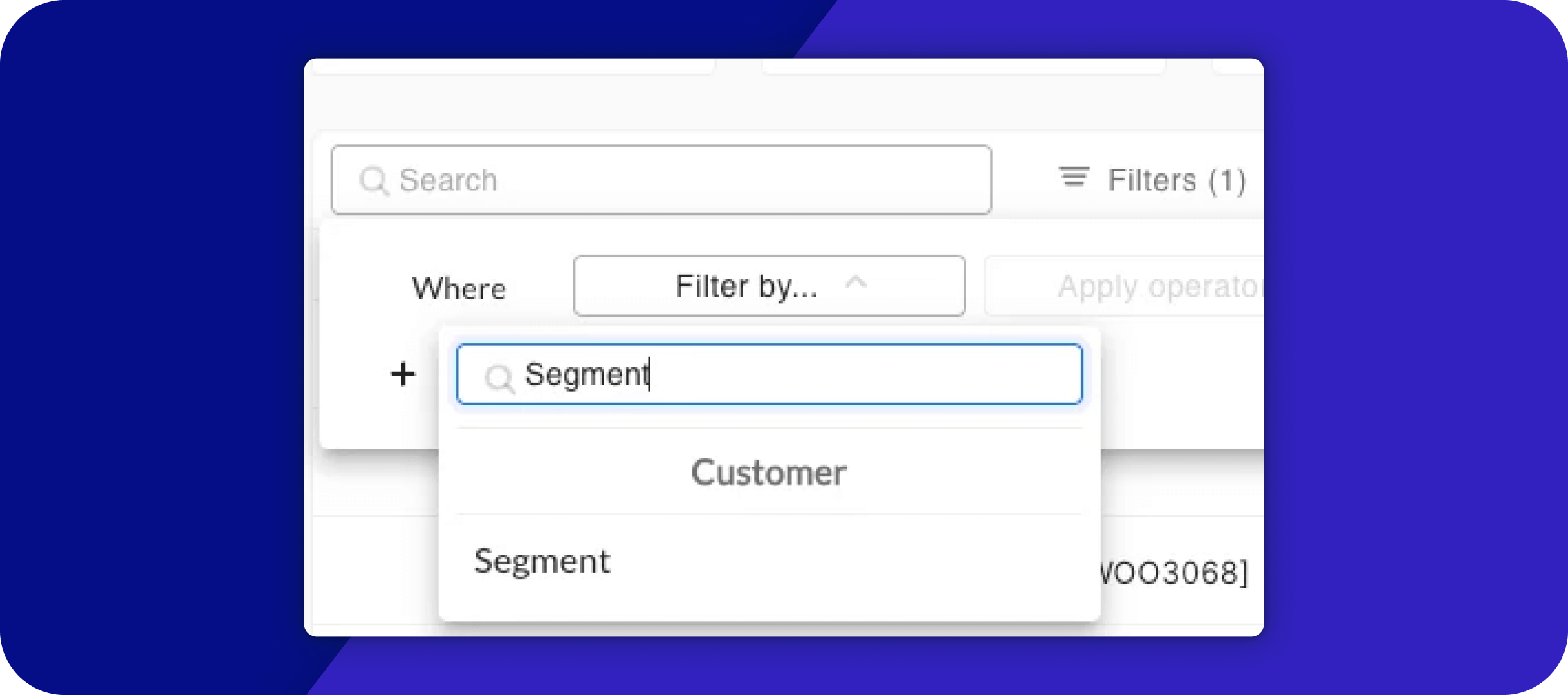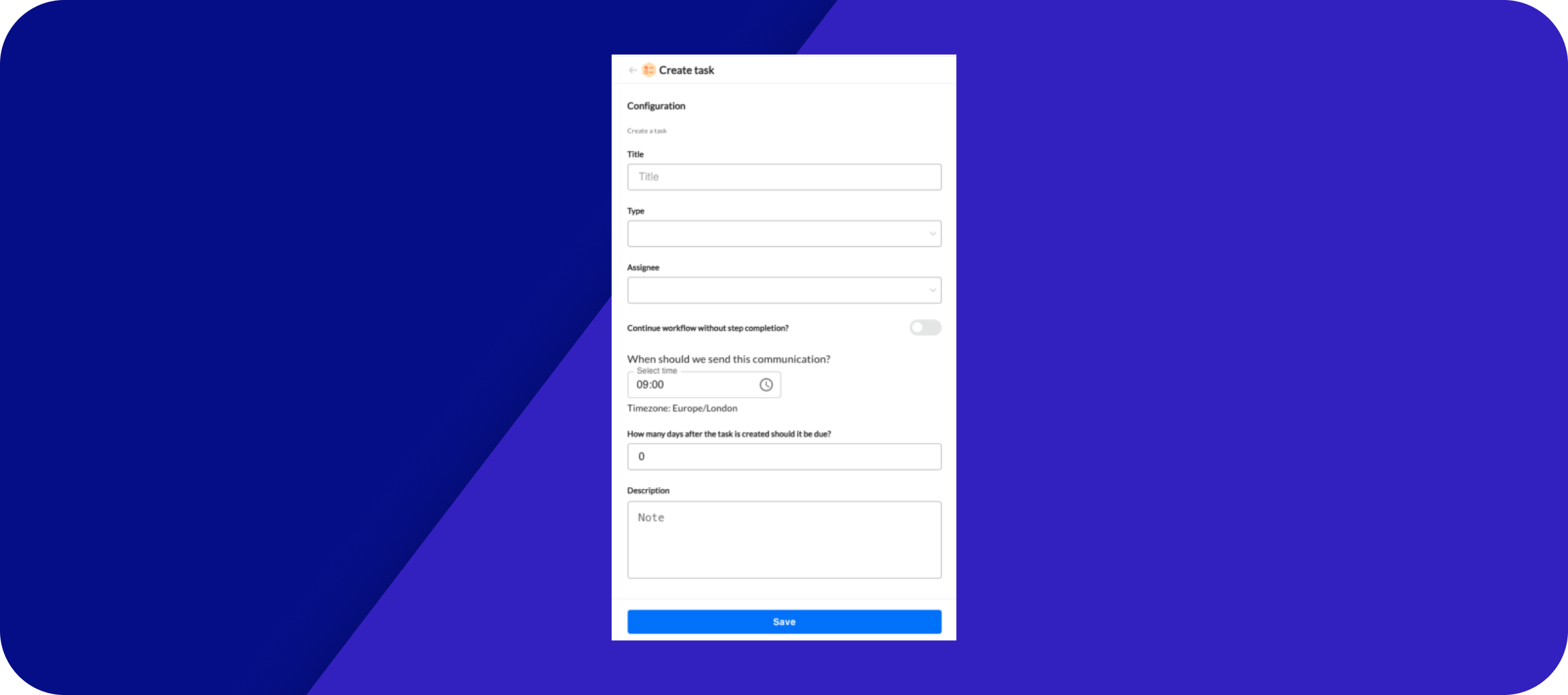Discover Kolleno’s latest updates, including Credit Notes reconciliation with NetSuite, new detailed reports, enhanced invoice tagging, and improved integration with QuickBooks and Business Central. Enhance efficiency with advanced features and seamless workflows.
1. Credit Notes Reconciliation
Kolleno is the first platform to offer Credit Notes reconciliation on your Banking Transactions, reconciling directly into NetSuite as a payment linked to both the transaction and the credit note!
Say goodbye to invoices partially reconciled due to credit notes being applied.
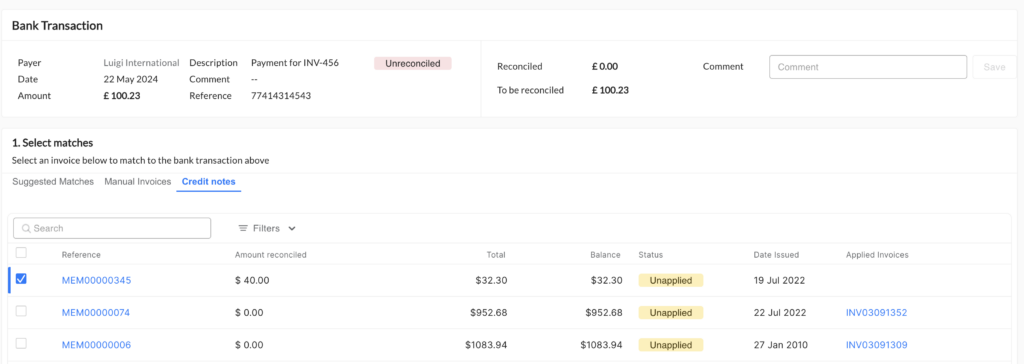
2. NetSuite – Deep Link to the Customer record
In the Customer Hub, next to the customer’s name you can click to see this customer record directly into NetSuite. Saving you time from doing several repetitive steps!

3. New Reports
We listened to you, and we built some new key data exports via the reports:
- Payment Charges Processed: new report that shows the list of payment charges done through your PSPs (Payment Service Providers) such as GoCardless, Stripe, and Adyen. It will help you confirm exactly what is happening with your PSPs.

- Workflow Impact: new report to view and analyze the performance of your workflows by comparing the analytics of your customers at the beginning and at the end of the workflow. It will help you evaluate the performance of your automated collections and improve it.

- Latest Note for customer/invoice: for every customer and invoice in the Detailed Aging report, we added a column on both sheets that shows the latest related note inputted in Kolleno. It will help you print it or share your screen in your team meetings to evaluate the current status of all your invoices.

4. Tags in the Invoices List
You can see the Tags assigned to your invoices directly in the main invoices list table. If there is more than one, just hover over it and see the others. Tags are another way to categorize your invoices, and seeing that information next to the rest is key.

5. Showing who Initiated the Payments
Often, you would see that payments have been triggered but you don’t know by who. It makes it more difficult to analyze the situation. Kolleno solved this by adding a column (on the far-right of the table) clearly telling you who or what triggered this payment:

6. Partially Refunded Status
In addition to the “REFUNDED” status, we have introduced a “PARTIALLY REFUNDED” status to give you visibility when the payment charges still have the capacity for refund.
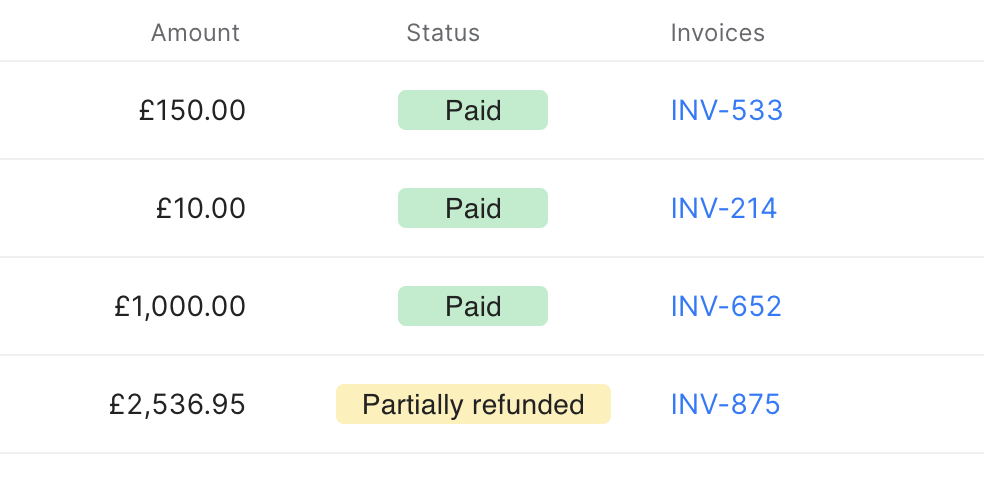
7. Login with Okta
On the login page, you can directly sign in with Okta. It provides your team members more flexibility (as you can already log in from the Okta dashboard) while maintaining the security of your data.

8. Strike Levels
Due to popular demand, we increased the number of Strike Levels from 3 to 10. It gives you the options you need to adapt to your current processes when you need to manually mark the level of difficulty with a customer.
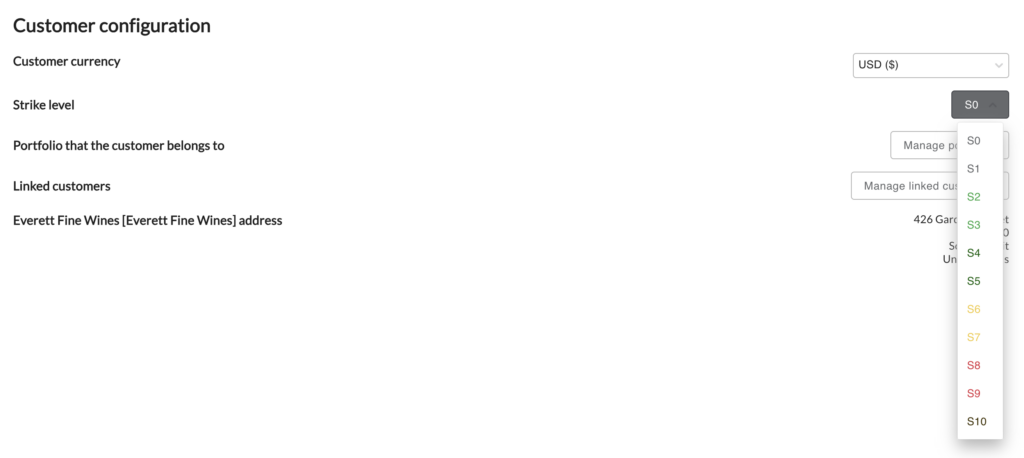
9. Business Central – Title as Contact Position
The “title” field in your Business Central contact is now pulled into Kolleno and stored as a contact position so you can refer to it in your workflows and when reviewing your data in the Customer Hub.

10. CSV import Portfolio
If you use the Kolleno CSV import until you can move to a seamless integration, you can keep your customers organized thanks to the new column “CUSTOMER_PORTFOLIO_NAME“. Simply enter the name of one of your portfolios and the customer will automatically be added to it.

11. ERP action in the Workflows
The Kolleno no-code workflows are the most powerful on the market for your finance team. Our latest update lets you automatically update any field in your ERP based on your custom rules, showcasing the true power of our solution.
Keep all your systems in perfect synch, thanks to Kolleno.
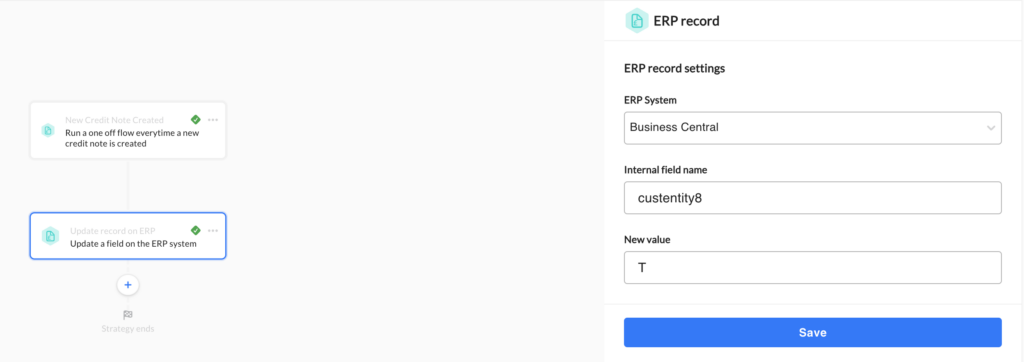
12. QuickBooks – Customer Groups
If you use the customer hierarchy functionality in QuickBooks, they now import into Kolleno as a group of linked customers. The ultimate parent can be found via filters. That way, you do not lose the structure you spent time building, and you can act on it in your collections workflows.
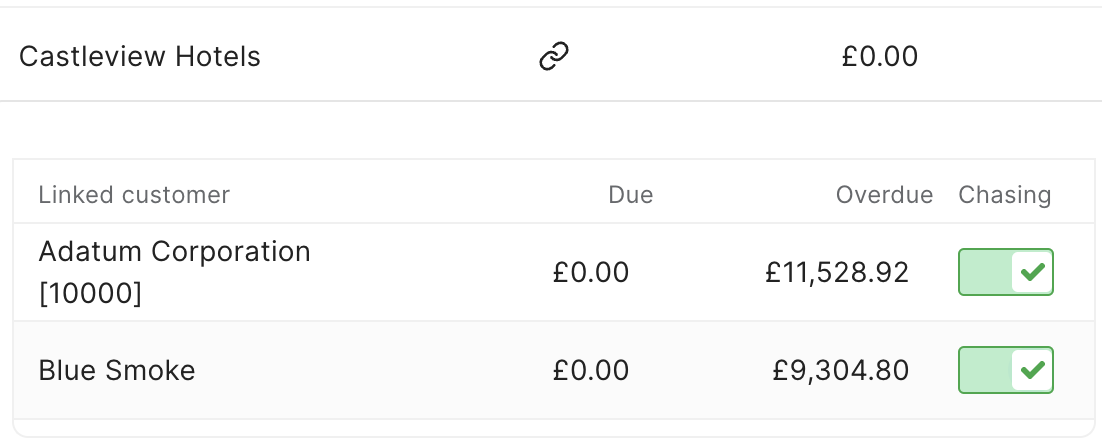
- 1. Credit Notes Reconciliation
- 2. NetSuite – Deep Link to the Customer record
- 3. New Reports
- 4. Tags in the Invoices List
- 5. Showing who Initiated the Payments
- 6. Partially Refunded Status
- 7. Login with Okta
- 8. Strike Levels
- 9. Business Central – Title as Contact Position
- 10. CSV import Portfolio
- 11. ERP action in the Workflows
- 12. QuickBooks – Customer Groups
